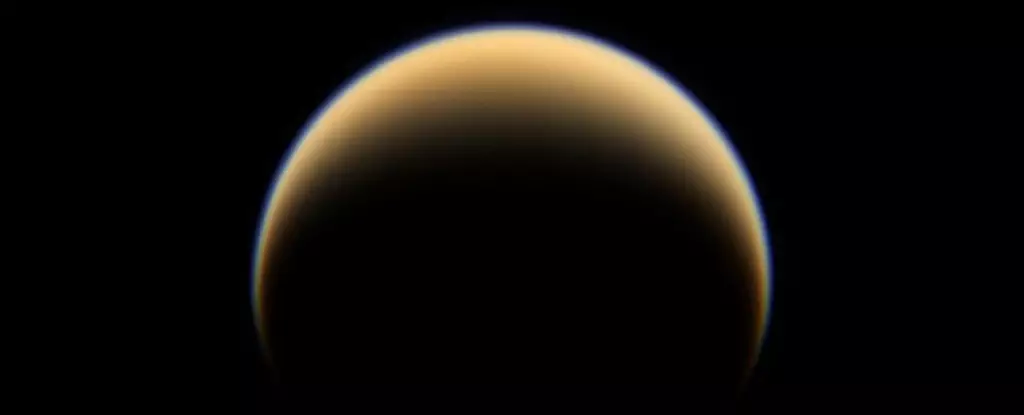Titan, Saturn’s largest moon, has long captivated scientists and explorers alike with its complex and mysterious environment. Its thick, golden haze and methane-rich surface create an otherworldly landscape, blurring the lines between familiar terrestrial conditions and alien possibilities. Unlike Earth’s vibrant life zones, Titan presents a cold, treacherous environment where liquid hydrocarbons flow in hydrocarbon lakes larger than the Great Lakes, and organic chemistry plays out on a planetary scale.
Yet, beneath this icy exterior lies the tantalizing hypothesis of a subsurface ocean—an extraterrestrial ocean of liquid water potentially harboring life. This layered structure resembles a cosmic jawbreaker, with a rocky core, an exotic high-pressure ice layer, a salty water ocean, and an icy crust that seals it off from the outside universe. Such comparisons to celestial desserts offer a poetic framing, but what truly matters is whether these layers could offer a stable, energy-rich environment conducive to life.
The often-ignored question remains: even if life exists in Titan’s concealed ocean, how flourishing could it be? Recent scientific insights suggest that Titan’s subterranean biosphere might be, at best, comparable to a tiny, dormant pet, weighing perhaps no more than a small dog—an unthinkably sparse biosphere in the vastness of the moon’s hidden ocean. This perspective challenges the romanticized notion of abundant extraterrestrial life, instead proposing a reality where possibilities are sharply limited by energy availability.
Organic Chemistry and the Feasibility of Life
Titan’s intrigue partly stems from its rich organic chemistry. Organic molecules—precursors to life as we understand it—are plentiful in its atmosphere, forming from the interaction of nitrogen and methane under sunlight’s ultraviolet radiation. These molecules rain down, settle into lakes, and are likely incorporated into its icy crust, fueling speculation that the raw ingredients for life are abundant enough to support a budding biological community.
However, the mere presence of organic compounds does not equate to hospitable conditions for life. While a rich inventory of organics might seem promising on the surface, the question emerges: are these molecules available in a form and quantity that could sustain a biosphere in Titan’s hidden ocean? Evidence suggests that Titan’s organic content, although impressive from a cosmic perspective, is likely spread thin and in forms only marginally suitable for microbial consumption.
The possibility that meteor impacts might introduce melt pools, or that some organic molecules could seep through tiny cracks into the ocean, offers pathways for chemical energy sources. Still, these processes are relatively rare and inefficient, and the influx of organics—like glycine, a basic amino acid—is probably limited over geological timescales. This scarcity constrains the potential for a vibrant, thriving biosphere, instead hinting at a microscale ecosystem.
The Reality of Microbial Life in Titan’s Subsurface Ocean
Scientists have employed bioenergetic modeling—akin to estimating how much energy microbes might obtain from available chemistry—to determine if life could even persist in Titan’s deep ocean. The conclusion? If life does exist, it would be exceedingly sparse. The entire biosphere’s biomass could be measured in kilograms, comparable to the weight of a small dog, dispersed across an immense, frigid oceanic realm.
This would mean that the microbial population might average site densities of less than one cell per kilogram of water—an almost inconceivable level of rarity when considering the vastness of the moon’s deep waters. Detecting such elusive life would be akin to finding a needle in a cosmic haystack—an extraordinarily challenging and perhaps impractical endeavor given current and near-future exploratory capabilities.
Here lies a crucial philosophical point: the mere potential for life on Titan, based on organic availability and subsurface conditions, does not guarantee a thriving or even detectable biosphere. Energy limitations, environmental stability, and sheer scarcity of nutrients govern the viability of life—constraining it to minute populations that challenge our traditional understanding of habitability.
Questioning the Expectations of Alien Ecosystems
This perspective calls into question the often overly optimistic portrayal of extraterrestrial life as abundant or even detectable from afar. Titan serves as a sobering example that planetary environments, despite containing the essential components of life, may still be profoundly inhospitable at the scale we typically conceive.
The implications go beyond Titan, urging us to refine our search strategies for extraterrestrial life. Instead of expecting lush, thriving ecosystems on distant moons, we might need to accept that any life present could be molecularly sparse and virtually invisible—existing as scattered, microscopic relics rather than densely populated biospheres.
This realization demands a shift in our scientific expectations and a greater appreciation for the complexity of life’s dependence on energy availability. The universe might be replete with planets and moons rich in raw ingredients, yet profoundly limited in their ability to host abundant life. The challenge lies in developing methods sensitive enough to detect the faint traces such sparse biospheres would leave behind—if they exist at all.
In the end, Titan exemplifies the delicate balance between molecular ingredients and energetic feasibility—the phrase “lone microbial whispers” resonates here, emphasizing that, despite its promising chemistry, the moon’s capacity for supporting life remains severely constrained. This humbling lesson inspires both caution and curiosity as humanity pushes forward in its cosmic exploration, searching not just for life, but for meaningful, sustainable biological communities in the universe.


Leave a Reply